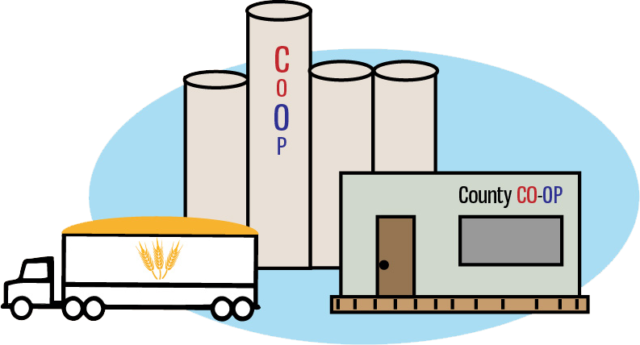Cereals and grains, the backbone of many diets worldwide, embark on a fascinating journey from the fields where they are cultivated to the tables where they become staples of nourishment. This article traces the intricate process of bringing cereals and grains from the field to the table, exploring the cultivation, harvesting, processing, and culinary uses that make them essential components of global food production.
1. **Cultivation:**
– *Diverse Crop Varieties:* Cereals and grains encompass a vast array of crops, including wheat, rice, corn, barley, oats, and more, each adapted to specific climates and regions.
– *Seasonal Growth:* These crops undergo seasonal cultivation, with farmers carefully managing planting schedules to optimize yield and quality.
2. **Harvesting:**
– *Meticulous Timing:* The timing of harvest is crucial to ensure grains reach their peak maturity, maximizing nutritional content and flavor.
– *Mechanized Harvesting:* Modern agriculture employs machinery like combine harvesters for efficient and large-scale grain harvesting.
3. **Processing and Milling:**
– *Cleaning and Sorting:* Harvested grains undergo cleaning and sorting processes to remove impurities, debris, and broken kernels.
– *Milling Techniques:* Milling transforms grains into various forms, producing flour, rice, or other products. Techniques range from stone milling to modern roller milling.
4. **Transportation:**
– *Logistics Networks:* Grains are transported from farms to processing facilities and distribution centers through extensive logistics networks, including trucks, trains, and ships.
– *Global Trade:* International trade plays a significant role, with grains crossing borders to meet diverse dietary needs worldwide.
5. **Packaging and Storage:**
– *Protective Packaging:* Processed grains are packaged to maintain freshness and prevent contamination. Packaging may include bags, boxes, or bulk containers.
– *Controlled Storage:* Proper storage conditions, such as controlled temperature and humidity, are crucial to preserve the quality and nutritional value of grains.
6. **Distribution:**
– *Supply Chain Integration:* An intricate supply chain ensures the seamless distribution of grains from processing facilities to retailers and, ultimately, to consumers.
– *Retail and Wholesale:* Grains are available in various forms at retail outlets, grocery stores, and wholesale markets, meeting the diverse needs of consumers.
7. **Consumer Choices:**
– *Diverse Culinary Uses:* Cereals and grains serve as versatile ingredients in diverse culinary traditions. They can be boiled, steamed, baked, fermented, or ground into flours for an array of dishes.
– *Staple Foods:* Grains form the foundation of staple foods worldwide, from bread and pasta to rice and couscous, reflecting cultural and regional preferences.
8. **Nutritional Value:**
– *Rich in Nutrients:* Cereals and grains are rich sources of carbohydrates, fiber, vitamins, and minerals. Whole grains offer additional benefits with their intact bran and germ layers.
– *Dietary Diversity:* Inclusion of various grains in the diet contributes to dietary diversity, supporting overall nutritional well-being.
9. **Culinary Traditions:**
– *Bread and Pastries:* Wheat-based products like bread, pastries, and pasta are staples in many Western cuisines.
– *Rice Dishes:* Rice takes center stage in numerous Asian, African, and Latin American dishes, showcasing its adaptability and cultural significance.
10. **Innovations in Food Production:**
– *Fortification:* Some food producers fortify cereals and grains with additional nutrients, addressing specific dietary deficiencies and enhancing nutritional value.
– *Alternative Grains:* The exploration of alternative grains, such as quinoa, spelt, and teff, offers consumers diverse and nutritious options.
11. **Sustainable Agriculture:**
– *Conservation Practices:* Sustainable agriculture practices, including crop rotation and precision farming, contribute to the longevity of cereal and grain cultivation.
– *Regenerative Farming:* The adoption of regenerative farming practices aims to enhance soil health and biodiversity in grain-producing regions.
12. **Challenges and Future Trends:**
– *Climate Change Impact:* Climate change poses challenges to cereal and grain production, affecting yields and requiring adaptation strategies.
– *Technological Advancements:* Continued advancements in agricultural technology, such as precision farming and genetic improvements, aim to address challenges and enhance sustainability.
Conclusion:
From the vast fields of cultivation to the tables where they become nourishing meals, the journey of cereals and grains is a testament to the global interconnectedness of food production. These versatile and nutritious staples, deeply rooted in culinary traditions, continue to evolve through innovations, sustainability initiatives, and the adaptability of farmers and food producers. As we celebrate the humble grain’s journey from field to table, we recognize its role in sustaining populations, shaping cultural identities, and contributing to the diverse tapestry of global cuisines.

